系
客
服

扫码留言



1.Batista KBSL, Thiruvenkatachari B, Harrison JE, O’Brien KD. Orthodontic treatment for prominent upper front teeth (Class II malocclusion) in children and adolescents (Review). Cochrane Database of Systematic Reviews. 2018;3:CD003452.
2. Enlow DH, Harris DB. A study of the postnatal growth of the human mandible. Am J Orthod Dentofacial Orthop. 1964;50(1):25-50.
3. Kurihara S, Enlow DH, Rangel RD. Remodeling reversals in anterior parts of the human mandible and maxilla. Angle Orthod. 1980;50(2):98-106.
4. Cozza P, Baccetti T, Franchi L, De Toffol L, McNamara Jr JA. Mandibular changes produced by functional appliances in Class II malocclusion: a systematic review. Am J Orthod Dentofacial Orthop. 2006;129(5):599.
5. Santos-Pinto PR, Martins LP, Santos-Pinto AD, Gandini Júnior LG, Raveli DB, Santos-Pinto CC. Mandibular growth and dentoalveolar development in the treatment of Class II, division 1, malocclusion using Balters Bionator according to the skeletal maturation. Dent Press J Orthod. 2013;18(4):43-52.
6. De Almeida MR, Henriques JF, Ursi W. Comparative study of the Fränkel (FR-2) and bionator appliances in the treatment of Class II malocclusion. Am J Orthod Dentofacial Orthop. 2002;121(5):458-66.
7. Michelotti A, Buonocore G, Manzo P, Pellegrino G, Farella M. Dental occlusion and posture: an overview. Progress Orthod. 2011;12(1):53-8.
8. Cai M, Brown EC, Hatt A, Cheng S, Bilston LE. Effect of head and jaw position on respiratory-related motion of the genioglossus. J Appl Physiol. 2016;120(7):758-65.
9. Keersmaekers KD, De Boever JA, Van Den Berghe L. Otalgia in patients with temporomandibular joint disorders. J Prosthet Dent. 1996;75(1):72-6.
10. Cuccia AM, Caradonna C. Binocular motility system and temporomandibular joint internal derangement: A study in aduts. Am J Orthod Dentofacial Orthop. 2008;133(5):640.
11. Vass Z, Shore SE, Nuttall AL, Miller JM. Direct evidence of trigeminal innervation of the cochlear blood vessels. Neuroscience. 1998;84(2):559-67.
12. Gomes LD, Horta KO, Gonçalves JR, Santos-Pinto AD. Systematic review: craniocervical posture and craniofacial morphology. Euro J Orthod. 2014;36(1):55-66.
13. An JS, Jeon DM, Jung WS, Yang IH, Lim WH, Ahn SJ. Influence of temporomandibular joint disc displacement on craniocervical posture and hyoid bone position. Am J Orthod Dentofacial Orthop. 2015;147(1):72-9.
14. Armijo-Olivo S, Magee D. Cervical musculoskeletal impairments and temporomandibular disorders. J Oral Maxillofac Res. 2012;3(4):12.
15. Sonnesen L. Associations between the cervical vertebral column and craniofacial morphology. Int J Dentistry. 2010;2010.
16. D’Attilio M, Caputi S, Epifania E, Festa F, Tecco S. Evaluation of cervical posture of children in skeletal class I, II, and III. J Craniomandibular Prac. 2005;23(3):219-28.
17. Ghodke S, Utreja AK, Singh SP, Jena AK. Effects of twin-block appliance on the anatomy of pharyngeal airway passage (PAP) in class II malocclusion subjects. Prog Orthod. 2014;15(1):68.
18. Slavicek R. Gelenkpositionsdiagnostik: und gezielte initialtherapie mit aufbisschienen im unterkiefer. Dtsch Zahnärztl Z. 1980;35:616-20.
19. Slavicek R, Die Funktionellen. Determinanten des kauorgans. zahnärztlich medizinisches schrifttum, München. 1984.
20. Slavicek R, Lugner P. Uber die MOglichkeit der Bestimmung des Bennettwinkels bei sagittaler Aufzeichnung. Osterr Z Stomatol. 1978;75:270.
21. Greven M, Reichardt G. Orthodontic early treatment during mixed dentition taking into consideration functional aspects avoiding removable orthodontic appliances MSc-Thesis DUK/KDU/Tufts University. 2003.
22. Sato S. Early Treatment and preventive treatment of temporomandibular disorders and occlusion in adolescence. 2007;6:109-142.
23. Sato H, Fujii T, Uetani M, Kitamori H. Anterior mandibular repositioning in a patient with temporomandibular disorders: a clinical and tomographic follow-up case report. Cranio. 1997;15(1):84-8.
24. Sato S. A treatment approach to malocclusions under the consideration of craniofacial dynamics. Grace Printing Press. 1991.
25. Steiner CC. Cephalometrics in clinical practice. Angle Orthod. 1959;29(1):8-29.
26. Rocabado M. Biomechanical relationship of the cranial, cervical, and hyoid regions: a discussion. J Craniomandibular Prac. 1983;1(3):61-6.
27. Kim YH, Vietas JJ. Anteroposterior dysplasia indicator: an adjunct to cephalometric differential diagnosis. Am J Orthod. 1978;73(6):619-33.
28. KIM YH. A comparative cephalometric study of Class II, Division 1 nonextraction and extraction cases. Angle Orthod. 1979;49(2):77-84.
29. Kim YH, Caulfield Z, Chung WN, Chang YI. Overbite depth indicator, anteroposterior dysplasia indicator, combination factor and extraction index. Int J MEAW. 1994;1(1):81-104.
30. Kahn J, Tallents RH, Katzberg RW, Ross ME, Murphy WC. Prevalence of dental occlusal variables and intraarticular temporomandibular disorders: molar relationship, lateral guidance, and nonworking side contacts. J Prosthet Dent. 1999;82(4):410-5.
英文原文依照知识共享署名4.0国际许可协议(http://creativecommons.org/licenses/by/4.0/)发布。
暂无评论
 请选择购买类型
请选择购买类型
 已成功加入购物车
已成功加入购物车